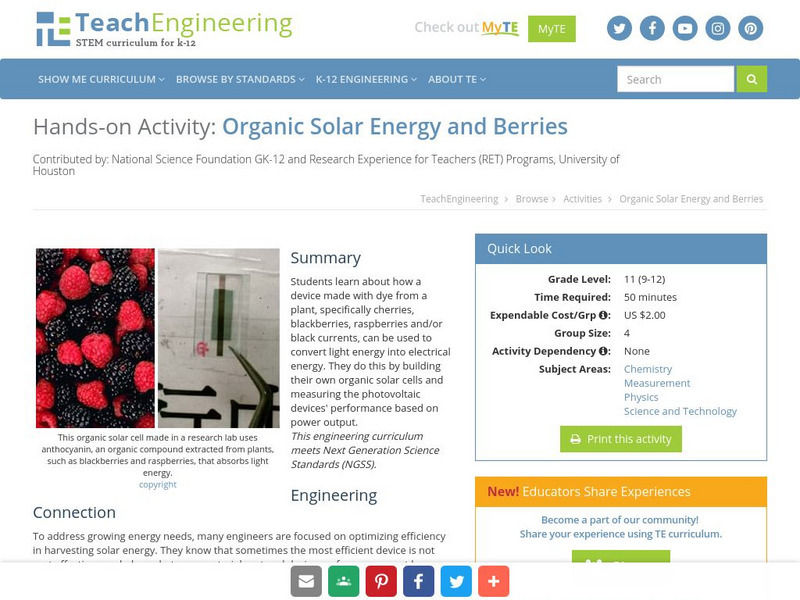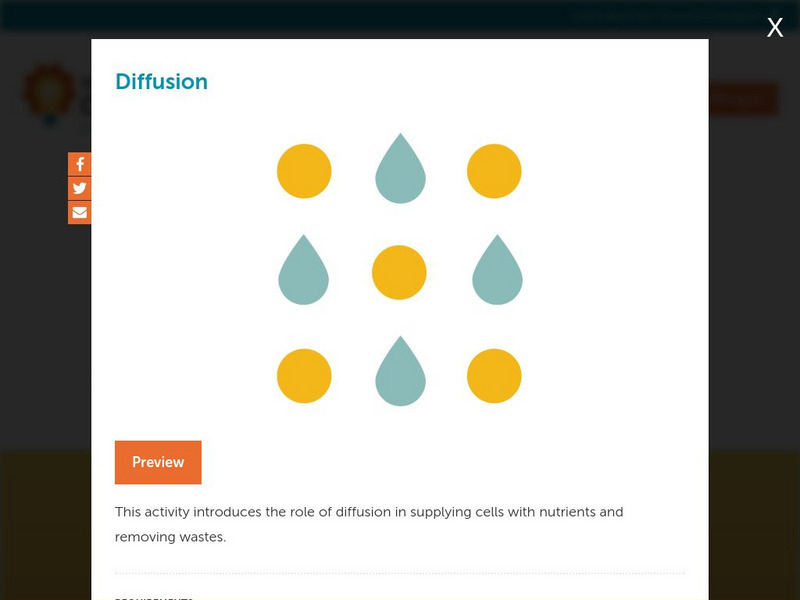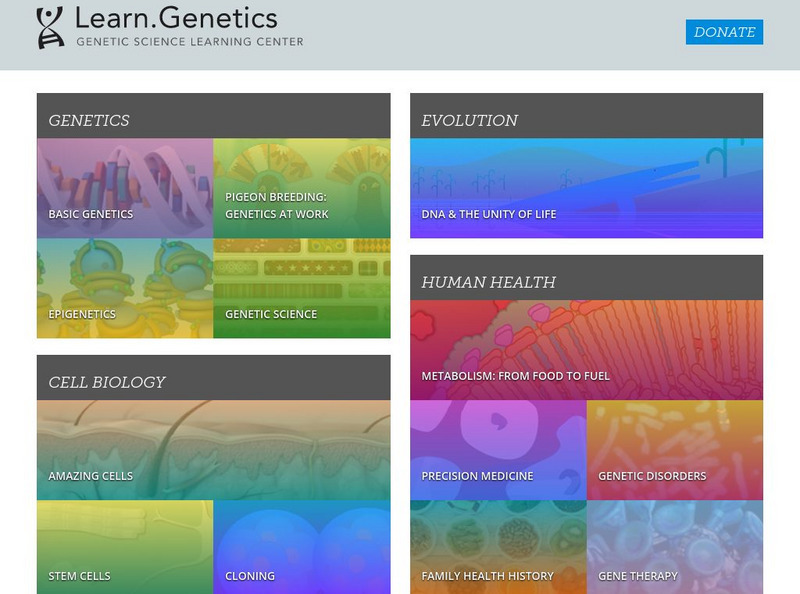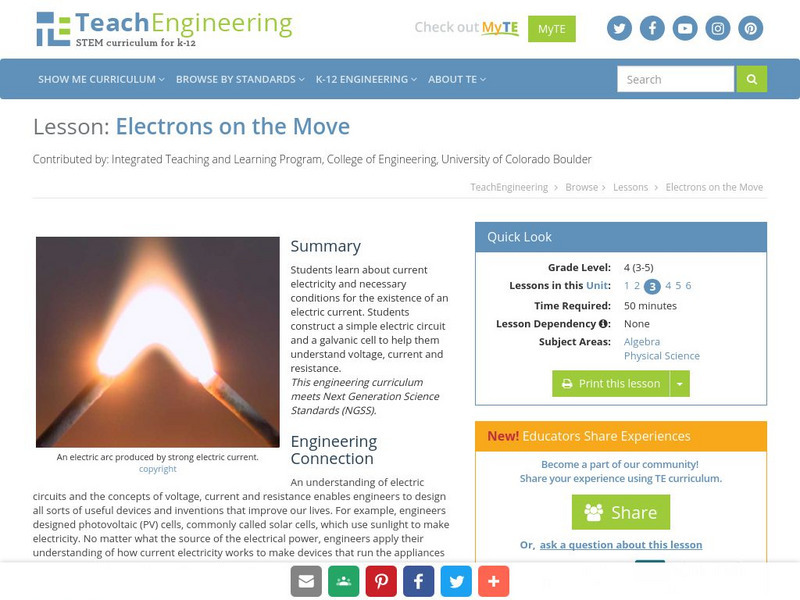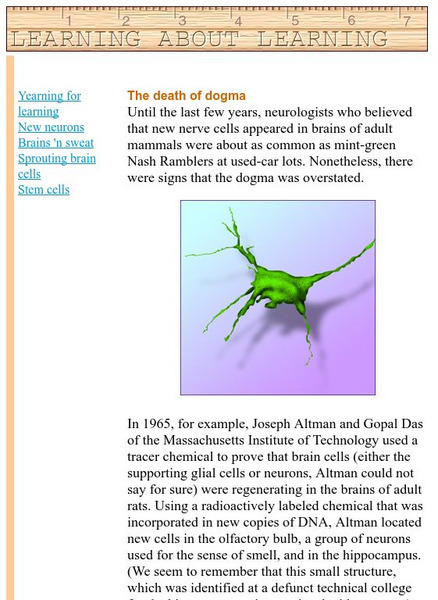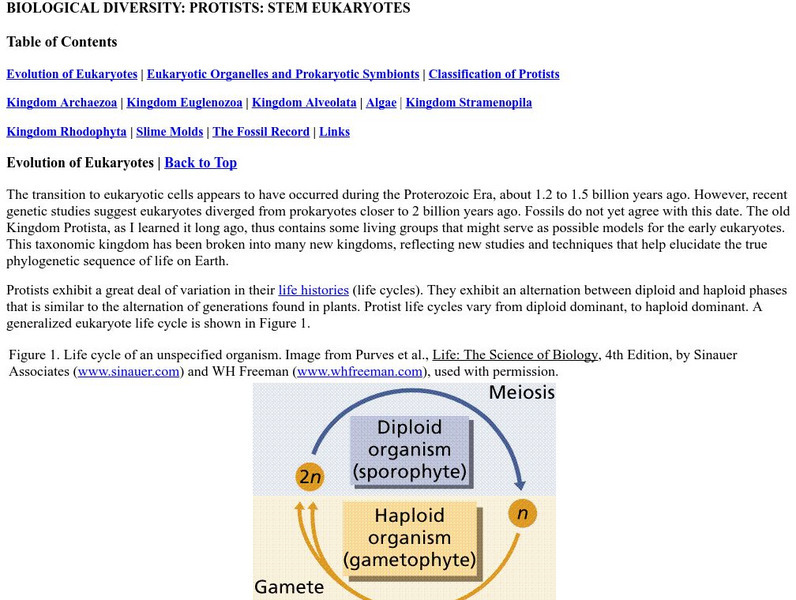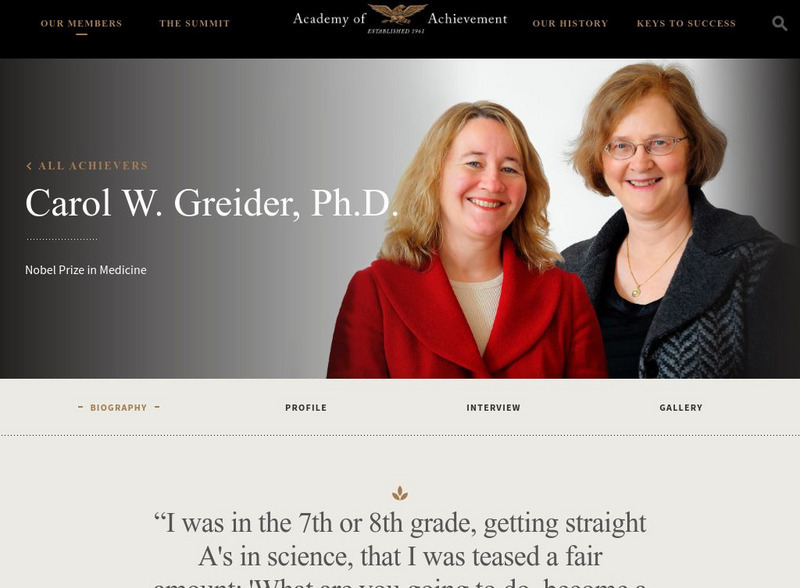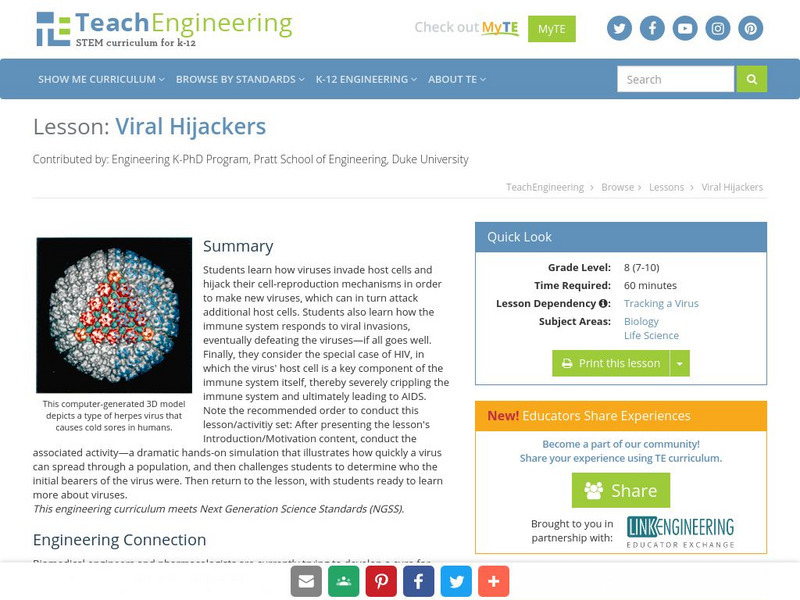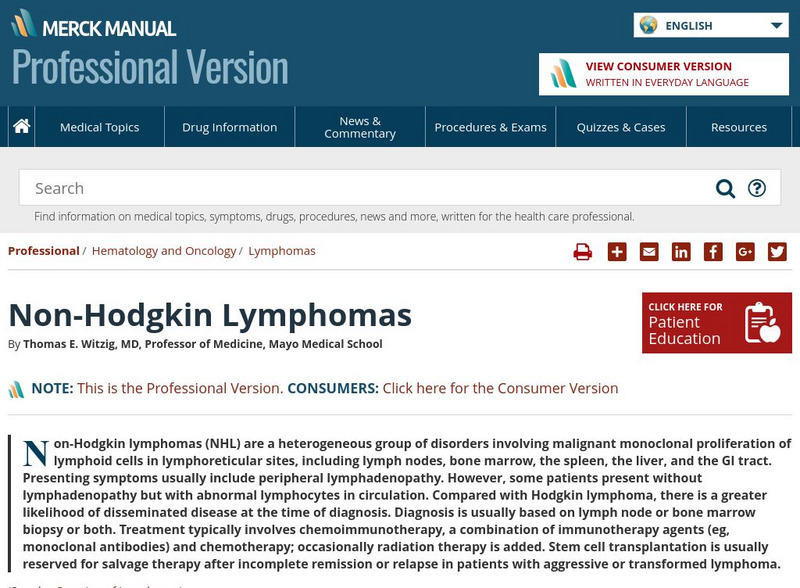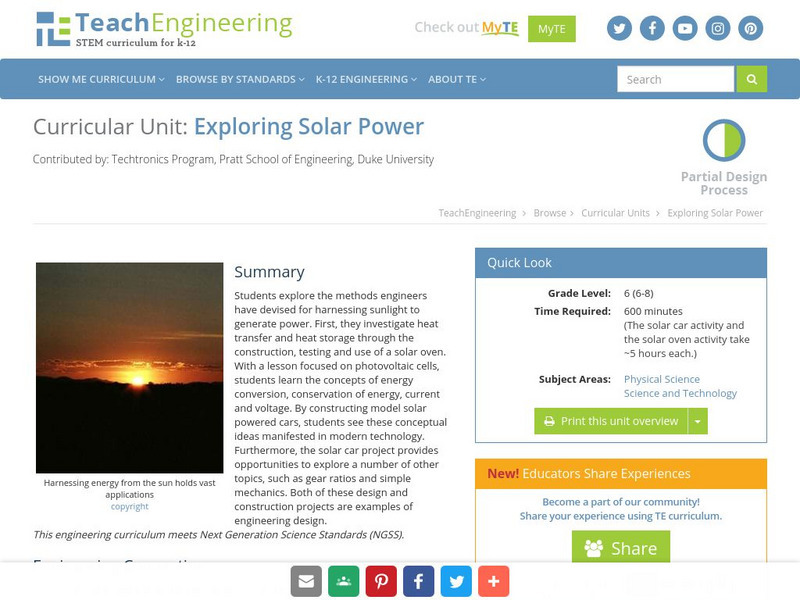TeachEngineering
Teach Engineering: Active and Passive Transport: Red Rover Send Particles Over
Students compare and contrast passive and active transport by playing a game to model this phenomenon. Movement through cell membranes is also modeled, as well as the structure and movement typical of the fluid mosaic model of the cell...
TeachEngineering
Teach Engineering: Organic Solar Energy and Berries
Students learn about how a device made with dye from a plant, specifically cherries, blackberries, raspberries and/or black currents, can be used to convert light energy into electrical energy. They do this by building their own organic...
Concord Consortium
Concord Consortium: Stem Resources: Diffusion
An activity to understand how diffusion is a result of random motion and collisions of particles. With the virtual labs, explore how a drop of food coloring into a glass spreads and how perfume diffuses at different temperatures and...
TeachEngineering
Teach Engineering: How to Make Yeast Cells Thrive
Students set up and run the experiments they designed in the lesson Population Growth in Yeasts, using simple yeast-molasses cultures in test tubes. Population growth is indicated by the amount of respiration occurring in the cultures,...
Khan Academy
Khan Academy: Apoptosis
Resource explains apoptosis (programmed cell death) and how it is different from necrosis (cell death due to injury).
University of Utah
University of Utah: Genetic Science Learning Center: The Basics and Beyond
This website offers a clear definition of the science of Genetics, highlighting DNA and genes. There is a neat, easy-to-understand animated tour of the basics and an opportunity to go inside an animated cell. Student can build a DNA...
The Association of the British Pharmaceutical Industry
Abpi: Biotechnology
Students read through a complete, interactive lesson on biotechnology. An activity at the end allows students to research and present arguments for or against statements about the ethics of gene therapy and gene manipulation.
Concord Consortium
Concord Consortium: Stem Resources: Cellular Respiration
Web-based activity provides an opportunity for students to study cellular respiration in an up-close and personal way. By following atoms and molecules through an interactive animation, they will be able to see the changes that take...
Other
The Plant Cell: Teaching Tools in Plant Biology: Why Study Plants?
Plants are essential for all life and development. Teach your students about this incredible lifeforce with this teaching guide, lecture notes, and PowerPoint presentation. [PDF]
TeachEngineering
Teach Engineering: Breathing Cells
Students use a simple pH indicator to measure how much CO2 is produced during respiration, at rest and after exercising. They begin by comparing some common household solutions in order to determine the color change of the indicator....
TeachEngineering
Teach Engineering: Electrons on the Move
Students learn about current electricity and necessary conditions for the existence of an electric current. Students construct a simple electric circuit and a galvanic cell to help them understand voltage, current and resistance.
American Association for the Advancement of Science
American Association for the Advancement of Science (Aaas)
The American Association for the Advancement of Science calls itself "The World's Largest General Scientific Society." Here you will find up-to-date news on scientific discoveries, including the EurekAlert! which has breaking news for...
University of Wisconsin
The Why Files: Death of Dogma
This article deals with the controversy around the regrowth of neurons in the central nervous system. Interesting facts relevant to neuron study.
Open Curriculum
Open Curriculum: Organization of the Human Body
An illustrated article which helps students understand the levels of organization of the human body.
Estrella Mountain Community College
Online Biology Book: Biological Diversity: Protists: Stem Eukaryotes
Through full-color images and descriptive information, learn about the evolution of the eukaryotic organisms which eventually led to the presence of protists.
American Academy of Achievement
Academy of Achievement: Carol Greider, ph.d.
Learn about the influential cell research of Carol Greider, Ph.D. and Dr. Elizabeth Blackburn which has furthered our understanding of cancer and moved us one step closer to a cure. This research earned them a Nobel Prize in Medicine....
Cosmo Learning
Cosmo Learning: Introduction to Biology
A collection of video lectures from an introduction to biology course taught at the Massachusetts Institute of Technology. The course teaches "biological function at the molecular level" with thirty-five lectures. Lectures vary in length...
Science Buddies
Science Buddies: Explore Enzyme Activity
In this science activity, you will investigate the enzyme called catalase to find out how it helps to protect your body from cell damage.
TeachEngineering
Teach Engineering: Viral Hijackers
Students learn how viruses invade host cells and hijack the hosts' cell-reproduction mechanisms in order to make new viruses, which can in turn attack additional host cells. Students also learn how the immune system responds to a viral...
Merck Sharp & Dohme Corp.
Merck Manual: Non Hodgkin's Lymphomas
Visit this website for some in-depth information regarding non-Hodgkin's lymphomas. The article gives details about the incidence rate; the classification system of lymphoma; the difference between non-Hodgkin's lymphoma (NHL) and...
TeachEngineering
Teach Engineering: What Do Bread and Beer Have in Common?
Learners are presented with information that will allow them to recognize that yeasts are unicellular organisms that are useful to humans. In fact, their usefulness is derived from the contrast between the way yeast cells and human cells...
American Academy of Achievement
Academy of Achievement: Elizabeth Blackburn, ph.d.
Biography on Elizabeth Blackburn, a research scientist who is credited with discovering new understanding of telomerase and telomere biology, opening the door to new treatments for degenerative diseases, aging, as well as cancer.
TeachEngineering
Teach Engineering: Exploring Solar Power
This unit provides students the opportunity to explore methods engineers have devised for harnessing sunlight to generate power. Students will initially explore heat transfer and heat storage through the construction, testing, and...
TeachEngineering
Teach Engineering: What's Dominant?
In a class discussion format, the teacher presents background information about basic human genetics. The number of chromosomes in both body cells and egg and sperm cells is covered, as well as the concept of dominant and recessive...
Other popular searches
- Cell Biology Stem Cells
- Human Stem Cells
- Bioethics of Stem Cells
- Ethical Issues Stem Cells
- Stem Cells Genetics
- Embryonic Stem Cells
- Debates Stem Cells
- Benefits of Stem Cells
- Stem Cells Lesson Plans
- Animal Plant Cells Stem
- Stem Cells for Plannet
- Stem Cells for Plan Net



